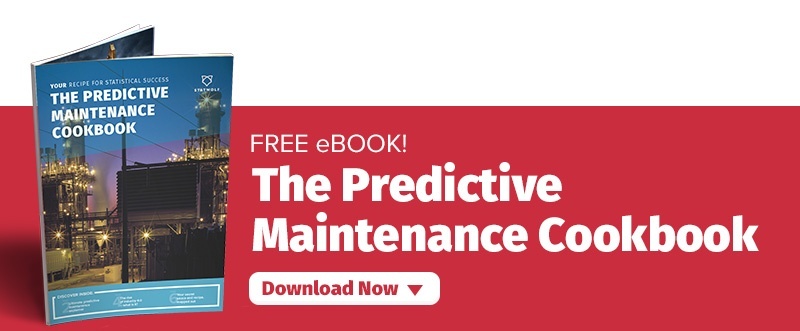The dangers of ignoring the power of AI in manufacturing
Atari was one of the most dominant gaming and computing companies in the world in the ‘70s and ‘80s. The Atari ACS and 5200 were the most cutting-edge gaming technologies around, with teenagers the world over captivated by Pong.
To cope with the demand, Atari’s founder Nolan Bushnell hired Steve Jobs to help him with engineering.
After a while working together, Jobs came to Bushnell with an idea that later become Apple Computers. Jobs offered the Atari founder the chance to own one-third of the fledgling Apple for the princely sum of $50,000.
Bushnell turned down Jobs’ offer because he didn’t believe in the future of home computing. Today, that one-third share in Apple is worth north of €250 billion.
Home computing seemed too novel a concept for Bushnell, and he missed out on a potentially huge windfall. Manufacturers face a similar issue with AI.
The “edge of a golden era”
Like home computing, AI is still somewhat of a novel concept – but it’s the new driver of efficiencies when it comes to manufacturing. A recent survey showed that companies which are currently using AI technology anticipate a boost of almost 40 percent to revenue by the end of 2020. Experts like Amazon’s Jeff Bezos say that we may be on “the edge of a golden era” when it comes to artificial intelligence.
To take just one example, the German manufacturer, Bosch, expects a boost to its revenue of €2 billion by 2020; €1 billion of which will come in new business earnings. The other billion will arise in savings – generated by using machine learning for predictive maintenance and self-monitoring.
One area where artificial intelligence is increasingly taking hold in the world of manufacturing is in supply chain management. A recent survey conducted by Accenture found that 85 percent of businesses have adopted or will adopt digital supply chain management strategies within the next year.
Understanding the variables
Artificial intelligence can help manufacturing businesses to analyse the huge amounts of data that supply chains are generating. This large-scale analysis helps the businesses to gain an understanding of the variables in the supply chain in order to anticipate future scenarios and eliminate uncertainties.
Siemens, for example, has “lights out” manufacturing plants which have automated the production lines to a point that they can run unsupervised for a period of up to three weeks. Siemens has stated that its goal is to build a full self-organising factory with an entirely automated supply chain.
This would involve artificially intelligent software converting the demand and order information into work orders, which in turn, would be incorporated into the manufacturing process.
According to Infosys, “savvy manufacturers will buck the offshore trend, use data to replace inventory, and experience enormous improvements in efficiency and reduction in costs as robots take over most of the assembling, moving, packaging, transporting and other physical tasks.
“Robots will be collaborative, working together and giving each other feedback. They will learn and improve and make smarter decisions — not just deterministic ones based on their programming, but proactive decisions based on their experiences.”
What can artificial intelligence offer your business?
So what can AI offer and why shouldn’t it be ignored? For one, it takes analysis to a whole new level. As per Gartner, the type of analytics untaken by businesses in the last decade fall into two categories: descriptive analysis, which describes what happened, and diagnostic analysis which explains why it happened.
The power of artificial intelligence means that analysis can happen at a much deeper level. This includes predictive analytics which predicts what will happen and prescriptive analytics which examines how you can make something happen.
Predictive analytics can mean analysing a piece of machinery in real-time to see what parts are under strain. Maintenance can be scheduled ahead of time or in scheduled maintenance downtime. According to McKinsey, this means that the cost of maintenance can be cut down by anywhere up to 40 percent.
When it comes to prescriptive analytics, perhaps the best-known example is used in Google’s self-driving car project. On every single trip it takes, the car’s operating system has to make multiple decisions around what to do next and even the order to do things in.
The system needs to take all the available data (speed of car, road condition, likelihood of pedestrians in the area, condition of brake pads for example) and make a decision in real-time. Prescriptive analytics is how the process works. The cars aren’t widely available yet but it’s reckoned the market could be worth €7 trillion by 2050.
That’s more than 500 times what Google is worth today. Unlike Atari, Google can see what’s coming down the tracks.
Do you want to use artificial intelligence in your business?
If you are thinking about how to get the most out of your business with artificial intelligence, Statwolf’s data science service can help, with advanced online data visualisation and analysis simply running in your web browser.
We offer a range of bespoke services which are designed to fit the exact need you have: advanced data analysis and modelling, custom algorithm creation and implementation with a particular focus on Predictive Maintenance.
Our advanced data science consultancy can team up with you to interpret your data and make your business work more efficiently so get in touch today to unleash your business’ potential.
Want to make sense of your data? Download our comprehensive guide: The Pedictive Maintenance Cookbook.


